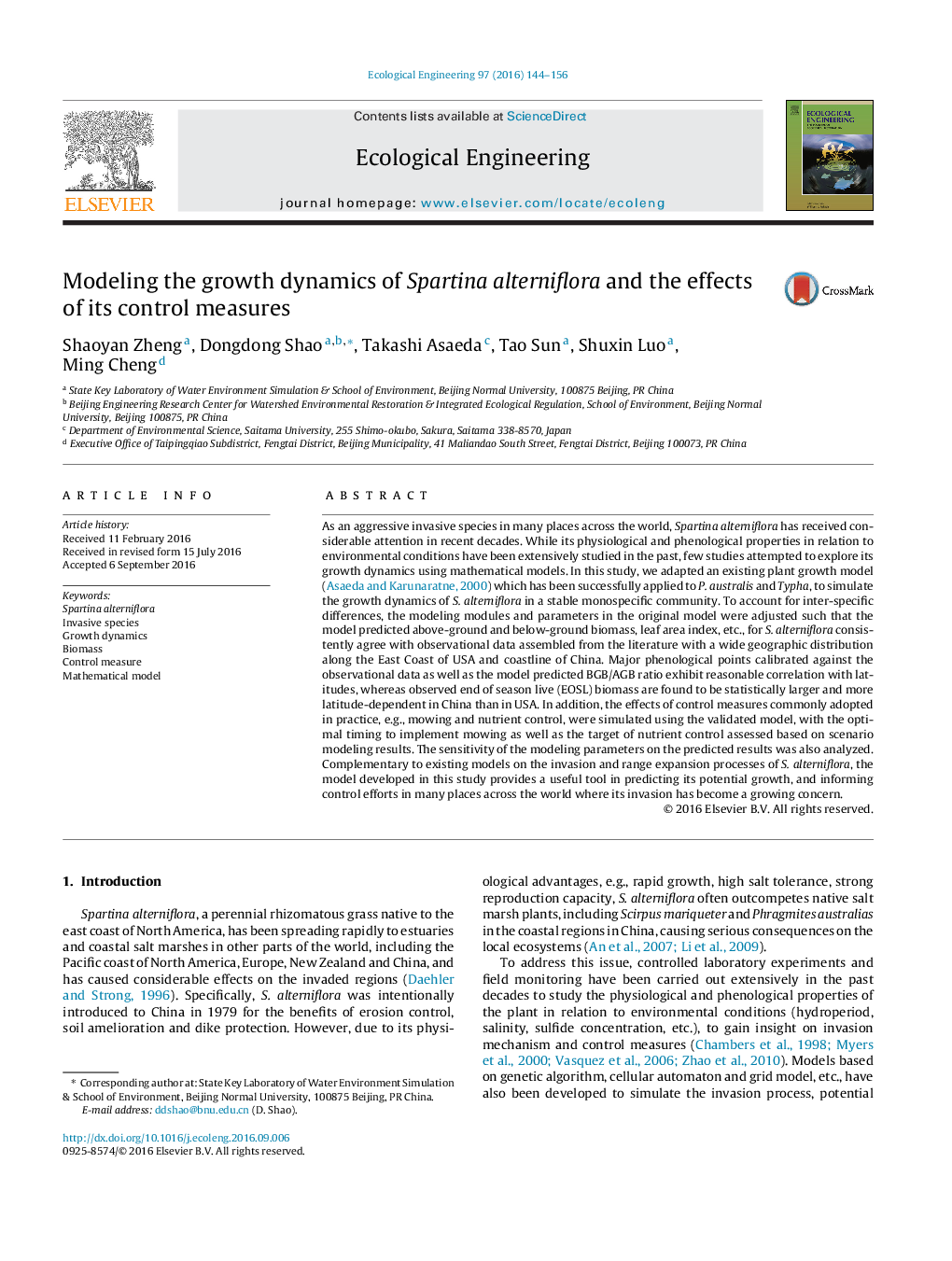| Article ID | Journal | Published Year | Pages | File Type |
|---|---|---|---|---|
| 4388375 | Ecological Engineering | 2016 | 13 Pages |
•A model has been developed to predict the growth dynamics of Spartina alterniflora.•Calibrated phenological points and predicted BGB/AGB ratio generally correlate with latitudes.•Observed AGB is statistically larger and more latitude-dependent in China than in USA.•The model was used to simulate the effects of control measures commonly adopted in practice.•Optimal timing to implement mowing and the target of nutrient control were assessed.
As an aggressive invasive species in many places across the world, Spartina alterniflora has received considerable attention in recent decades. While its physiological and phenological properties in relation to environmental conditions have been extensively studied in the past, few studies attempted to explore its growth dynamics using mathematical models. In this study, we adapted an existing plant growth model ( Asaeda and Karunaratne, 2000) which has been successfully applied to P. australis and Typha, to simulate the growth dynamics of S. alterniflora in a stable monospecific community. To account for inter-specific differences, the modeling modules and parameters in the original model were adjusted such that the model predicted above-ground and below-ground biomass, leaf area index, etc., for S. alterniflora consistently agree with observational data assembled from the literature with a wide geographic distribution along the East Coast of USA and coastline of China. Major phenological points calibrated against the observational data as well as the model predicted BGB/AGB ratio exhibit reasonable correlation with latitudes, whereas observed end of season live (EOSL) biomass are found to be statistically larger and more latitude-dependent in China than in USA. In addition, the effects of control measures commonly adopted in practice, e.g., mowing and nutrient control, were simulated using the validated model, with the optimal timing to implement mowing as well as the target of nutrient control assessed based on scenario modeling results. The sensitivity of the modeling parameters on the predicted results was also analyzed. Complementary to existing models on the invasion and range expansion processes of S. alterniflora, the model developed in this study provides a useful tool in predicting its potential growth, and informing control efforts in many places across the world where its invasion has become a growing concern.
